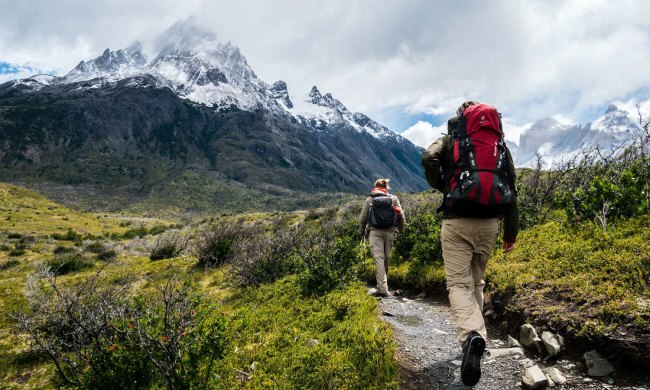When a sport is borne of rebellion, it’s hardly a surprise that jibbing around the resort is a mainstay of snowboarding culture. For those not in the know, jibbing means hitting jumps, sending spins, and sliding rails. The world of snowboard tricks is almost endless, but as a developing snowboarder, you need to know where to start if you want your tricks to take off.
There are two places where most people choose to start with their tricks. These are grabs and — more commonly — spins. Spins take some practice but find yourself a small kicker — ideally with a soft landing — and start on your 180s, 360s, and even more. Once you’ve got these dialed, you’ll be sending them off-side hits on groomers and finding every natural feature you find in the backcountry. Your best starting point for these is to watch the video below, recently posted to the r/snowboarding subreddit, to understand how spins can be performed.
Frontside vs. Backside
As you can see, snowboard spins are performed either frontside or backside. This is slightly more complex than just turning clockwise or anti-clockwise, with your direction depending on whether you ride goofy or regular. Let’s break down the difference quickly because they can be counterintuitive.
- A frontside turn is when the first 90° of your turn sees you facing downhill.
- A backside is the opposite and after the first 90° of your turn, you will be facing uphill.
Many riders find it easier to turn frontside, especially regular riders. On a 180 this doesn’t make a huge difference, but on a 360 there are two main trains of thought. Firstly, it feels less scary because in the second half of your spin — the latter stages — you’re facing uphill and not staring down the barrel of a steep landing. Unfortunately, this also means that unless you complete your spin early, you are landing a little blind and it can be harder to spot your landing over your shoulder.
Switch Spins
Riding switch means riding with your wrong foot forwards. Spinning from switch is when you take off with the wrong foot forwards. This is popular with beginners learning 180s — and later on 540s — because you can land in your usual riding position. The same rules for whether your trick is called a front-side or backside spin apply to riding switch too. Backside spins performed in switch are simply referred to as switch backside spins, but frontside spins are commonly referred to as cab spins — short for Caballerial, a skateboarding trick named after Steve Caballero.
If you were going to call a trick, you would use phrases like ‘Backside 360’, or ‘Cab 180’ to describe what you were going to throw. Remember this for when you and your buddies are cruising around and playing your own game of S.K.A.T.E like you did when you were kids in the street. One of the best ways to get your tricks dialed is to keep snowboarding fun. Call a trick, if you land it and your buddy bails, they get a letter. See who can get their tricks to stick.




